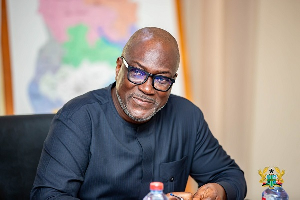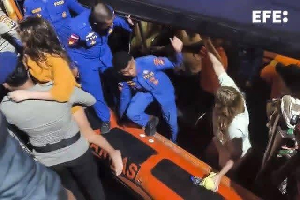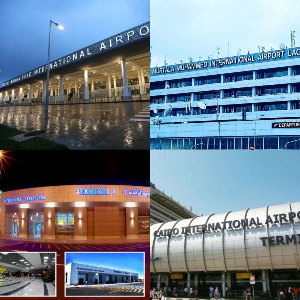By Kwame Okoampa-Ahoofe, Jr., Ph.D.
The news report that a K-8 fighter jet belonging to the Ghana Air Force on a training flight had its fuel tank split in halves and fall out of the sky, did not come as any significant surprise to me at all (See “Jet Loses Fuel Tank Mid-Air” Modernghana.com). What came as good news to me was the fact that one-half of the fuel tank that landed on the roof of a three-bedroom house, did not seriously injure or hurt the sole occupant at the time, a Ms. Lahira Inusa. The other half, which reportedly landed on a playing ground, also did not claim any casualties.
In the latter case, it was a sheer happenstance of the playing ground having been empty of children at the time of the accident. What fascinated me most about this story, however, was the fact that the Daily Guide journalist who reported the incident, Ms. Linda Tenjah, gave readers a quite meaningful description of the house on which one-half of the aircraft’s fuel tank landed but, surprisingly, did not tell us how old the K-8 fighter jet was and the last time that it had been serviced by engineers of the Ghana Air Force.
You see, this is a crucial part of what good journalism is about. And the fact that Ms. Tenjah appears to have taken this very significant aspect of her story for granted, tells us that she is definitely not a critical thinker, and therefore cannot be taken as a serious writer. And the fact that the reporter’s editors had not, apparently, questioned her about this most significant missing puzzle of the story but, instead, chosen to run the same almost immediately, does not positively reflect on their professionalism.
We know for a fact that both the reporter and her editors woefully lack an adequate level of professionalism, because they would have informed their readers if the public relations directorate of the Ghana Air Force had refused to answer such query, even on grounds of national security.
One thing, however, is certain; and it is the fact that an aircraft whose fuel tank falls off while it is in flight, very likely, is poorly maintained and/or is no longer flight worthy and ought to be promptly retired. Such an aircraft is best described as a veritable death trap. Personally, I can confidently vouch that the aforesaid K-8 fighter jet very likely belongs to the World War II era generation of aircraft. If this observation has validity, then, perhaps, the Ghana Air Force had better start training its personnel by the use of state-of-the-art simulators. They are far safer and generally offer a fairly comparable experience to rookie pilots, that is, until flight-worthy aircraft could be provided these young patriotic souls and operational hearts of the GAF.
I was also puzzled by this near-tragic development because in recent months, the Mills-led government of the so-called National Democratic Congress (NDC) has been telling the public that it has imported several state-of-the-art military jets in a bid to upgrading the fast-aging fleet of the Ghana Air Force, and also as a means of enabling the GAF deal with the possible outbreak of any national-security crisis, both externally and internally. If the preceding is, indeed, the case, then somebody higher up in government ought to explain to the Ghanaian public precisely why GAF trainees would still be using virtual hulks for the purpose. Somebody must be thinking that the lives of these young men and women patriots of the Ghana Air Force are not significant enough to be jealously guarded.
And going by the flurry of judgment-debt settlements and other such similar cases pending before our nation’s judicial system, there clearly does not appear to be any significant financial dire straits preventing the Government of the day from providing the best training facilities and incentives to our uniformed men and women of the Ghana Air Force and the other equally critical sectors of our national security apparatus.
Something ought to be done before precious lives and talents are irreparably lost. The future of postcolonial Ghana is still ahead of us, and in the hands of our youths! *Kwame Okoampa-Ahoofe, Jr., Ph.D., is Associate Professor of English, Journalism and Creative Writing at Nassau Community College of the State University of New York, Garden City. He is Director of The Sintim-Aboagye Center for Politics and Culture and author of “Dr. J. B. Danquah: Architect of Modern Ghana” (iUniverse.com, 2005). E-mail: okoampaahoofe@optimum.net. ###
Opinions of Friday, 27 July 2012
Columnist: Okoampa-Ahoofe, Kwame














